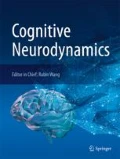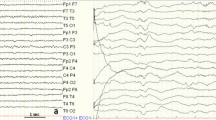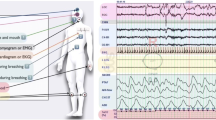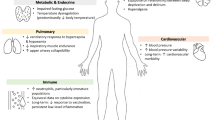Abstract
The two-process model is a scheme for the timing of sleep that consists of homeostatic (Process S) and circadian (Process C) variables. The two-process model exhibits abnormal sleep patterns such as internal desynchronization or sleep fragmentation. Early infants with autism often experience sleep difficulties. Large day-by-day changes are found in the sleep onset and waking times in autistic children. Frequent night waking is a prominent property of their sleep. Further, the sleep duration of autistic children is often fragmented. These sleep patterns in infants with autism are not fully understood yet. In the present study, the sleep patterns in autistic children were reproduced by a modified two-process model using nonlinear analysis. A nap term was introduced into the original two-process model to reproduce the sleep patterns in early infants. The nap term and the time course of Process S are mentioned in the present study. Those parameters led to bifurcation of the sleep-wake cycle in the modified two-process model. In a certain range of these parameter sets, a small external noise was amplified, and an irregular sleep-wake cycle appeared. The short duration of sleep led to another irregular sleep onset or waking. Consequently, an irregular sleep-wake cycle appeared in early infantile autism.







Similar content being viewed by others
References
Åkerstedt T, Gillberg M (1981) The circadian variation of experimentally displaced sleep. Sleep 4(2):159–169
Beersma DG, Daan S, Van den Hoofdakker RH (1985) The timing of sleep in depression: theoretical considerations. Psychiatry Res 16(3):253–262
Borbély AA (1982) A two process model of sleep regulation. Hum Neurobiol 1(3):195–204
Borbély AA (1987) The S-deficiency hypothesis of depression and the two-process model of sleep regulation. Pharmacopsychiatry 20(1):23–29
Borbély AA, Wirz-Justice A (1982) Sleep, sleep deprivation and depression. A hypothesis derived from a model of sleep regulation. Hum Neurobiol 1(3):205–210
Broughton R, Mullington J (1992) Circasemidian sleep propensity and the phase-amplitude maintenance model of human sleep/wake regulation. J Sleep Res 1(2):93–98
Daan S, Beersma D (1984a) Circadian gating of human sleep-wake cycles. In: Moore-Ede MC, Czeisler CA (eds) Mathematical models of the circadian sleep-wake cycle. Raven Press, New York, pp 129–158
Daan S, Beersma DG, Borbély AA (1984b) Timing of human sleep: recovery process gated by a circadian pacemaker. Am J Physiol 246(2 Pt 2):R161–R183
Fukuda K, Asaoka S (2004) Delayed bedtime of nursery school children, caused by the obligatory nap, lasts during the elementary school period. Sleep Biol Rhythms 2(2):129–134
Gaudreau H, Carrier J, Montplaisir J (2001) Age-related modifications of NREM sleep EEG: from childhood to middle age. J Sleep Res 10(3):165–172
Hoshino Y, Watanabe H, Yashima Y, Kaneko M, Kumashiro H (1984) An investigation on sleep disturbance of autistic children. Folia Psychiatr Neurol Jpn 38(1):45–51
Iglowstein I, Jenni OG, Molinari L, Largo RH (2003) Sleep duration from infancy to adolescence: reference values and generational trends. Pediatrics 111:302–307
Inanuma K (1984) Sleep-wake patterns in autistic children. Jpn J Child Adolesc Psychiatr 25(4):205–217
Kanner L (1943) Autistic disturbances of affective contact. Nerv Child 2:217–250
Kanner L (1944) Early infantile autism. J Pediatr 25:211–217
Kleitman N (1963) The evolutionary theory of sleep and wakefulness. In: Kleitman N (ed) Sleep and wakefulness. The University of Chicago Press, Chicago, pp. 363–370
Nakao M, Sakai H, Yamamoto M (1997) An interpretation of the internal desynchronizations based on dynamics of the two-process model. Methods Inf Med 36:282–285
Ornitz EM (1972) Development of sleep patterns in autistic children. In: Clemente CD, Pupura DP, Mayer EF (eds) Sleep and the maturing nervous system. Academic Press, New York, pp 363–381
Rutter M (1968) Concepts of autism: a review of research. J Child Psychol Psychiatry 9(1):1–25
Rutter M (1978) Diagnosis and definition of childhood autism. J Autism Child Schizophr 8(2):139–161
Takase M, Taira M, Sasaki H (1998) Sleep-wake rhythm of autistic children. Psychiatry Clin Neurosci 52(2):181–182
Waldhauser F, Weiszenbacher G, Tatzer E, Gisinger B, Waldhauser M, Schemper M, Frisch H (1988) Alterations in nocturnal serum melatonin levels in humans with growth and aging. J Clin Endocrinol Metab 66(3):648–652
Werth E, Dijk DJ, Achermann P, Borbély AA (1996) Dynamics of the sleep EEG after an early evening nap: experimental data and simulations. Am J Psychiatry 271(3 Pt 2):R501–R510
World health organization (1978) Mental disorders: glossary and guide to their classification in accordance with the ninth revision of the international classification of diseases (ICD-9). WHO, Geneva
Zulley J, Campbell SS (1985) Napping behavior during “spontaneous internal desynchronization”: sleep remains in synchrony with body temperature. Hum Neurobiol 4(2):123–126
Acknowledgements
The authors thank Dr. Kunio Inanuma for support and discussion about his data. This work was supported by the 21th Century COE Program in the Kyushu Institute of Technology entitled “World of brain computing interwoven out of animals and robots”.
Author information
Authors and Affiliations
Corresponding author
Rights and permissions
About this article
Cite this article
Matsuura, H., Tateno, K. & Aou, S. Dynamical properties of the two-process model for sleep-wake cycles in infantile autism. Cogn Neurodyn 2, 221–228 (2008). https://doi.org/10.1007/s11571-008-9051-3
Received:
Accepted:
Published:
Issue Date:
DOI: https://doi.org/10.1007/s11571-008-9051-3




